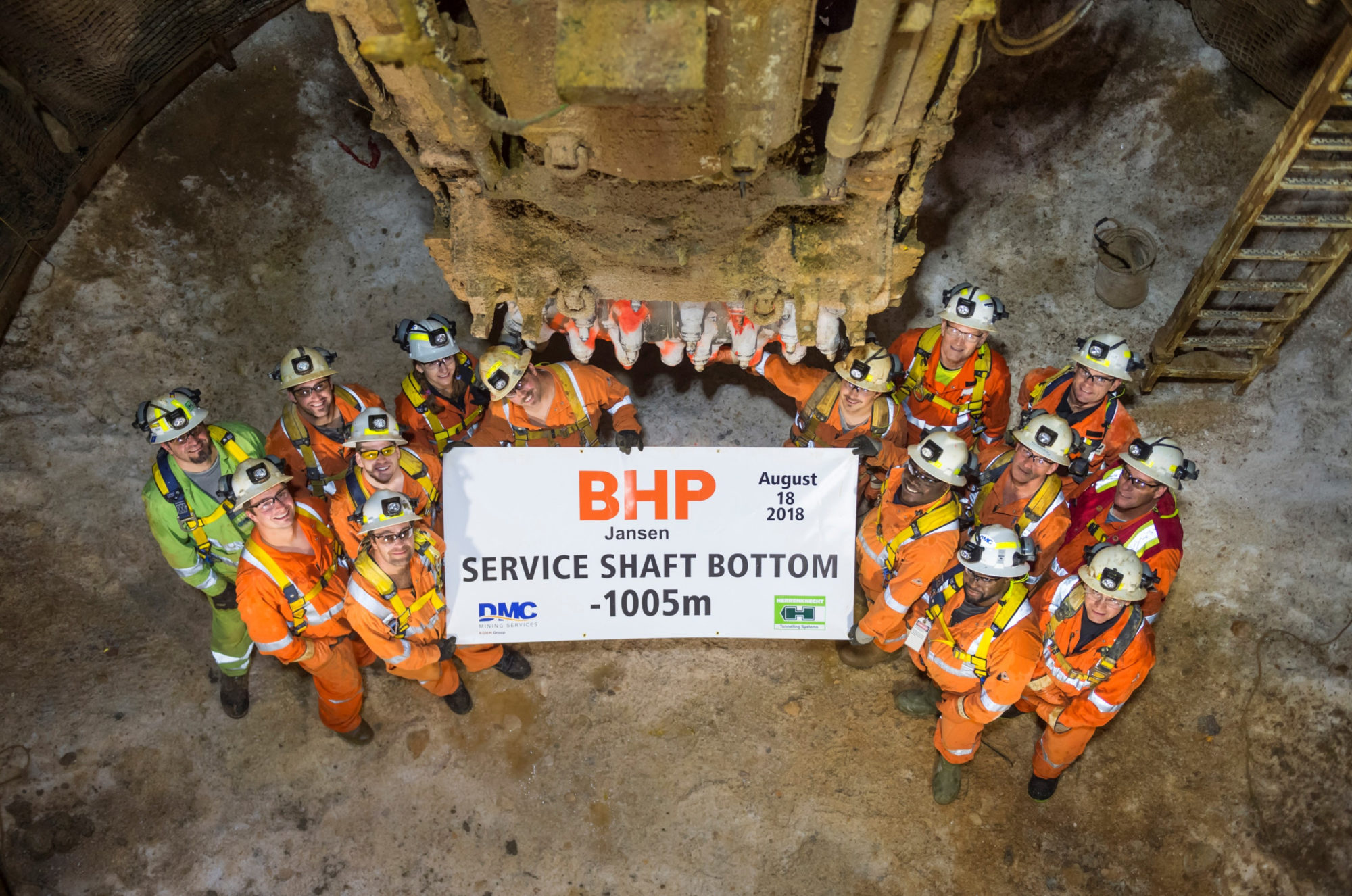Having successfully excavated two 8-11 m diameter blind shafts using Shaft Boring Roadheaders (SBRs) at the BHP-owned Jansen potash project, Herrenknecht is leveraging all the lessons it learnt in Saskatchewan, Canada, to ensure this technology proves to be a “game changer” for the sinking of shafts in soft and medium-hard rock.
Mining contractor DMC Mining Services used two SBRs to excavate the blind shafts at Jansen, with the successful project completion acting as proof of the feasibility and advantages of the Herrenknecht SBR concept for the mining industry, according to the Germany-based company.
In August 2018, the mining industry milestone was achieved with the successful completion of two blind shafts to depths of -975 and -1,005 m, respectively, at the Jansen potash project. For the first time, shafts in the mining business were sunk using only mechanical excavation for this reference project.
Two Herrenknecht SBRs excavated the ground by a partial-face cutting method, using a cutting drum mounted on a telescopic boom. The excavated rock was then conveyed from the bench by an innovative pneumatic mucking system (PNM) and transferred into muck buckets to be hoisted to surface, the company said.
An innovative laser navigation system designed by the Herrenknecht subsidiary, VMT Group, using target units mounted on the SBR and lasers connected to the shaft wall, was used to keep the machines on track.
Herrenknecht, with its experience as a technology leader in mechanised tunnelling, developed the SBR for the mechanised sinking of blind shafts in soft to medium-hard rock. Based on the proven technology of the Herrenknecht Vertical Shaft Sinking Machine (VSM), the SBR offers improved safety performance compared with conventional shaft sinking methods while also achieving higher advance rates, according to the company.
The geological conditions at Jansen, however, were anything but easy. At a depth of around 450 m, the SBR encountered a layer of extremely hard competent rock causing excessive pick wear and low rates of advance. To overcome this and some further hardness challenges, the cutting drum was upgraded to a hard-rock cutting drum and torque output was doubled.
Because an existing high-pressure underground waterway, known as the Blairmore aquifer, posed a risk for water ingress into the shaft, ground freezing was executed temporarily in 2011 by BHP to a depth of approximately 650 m.
A major success in this difficult geology was the use of a mechanical ring erector, which allowed the installation of steel tubbing segments with minimal risk to personnel and a high degree of accuracy, according to Herrenknecht. The steel liner rings were installed through the Blairmore aquifer to assist in the development of a composite steel and concrete watertight liner in both shafts.
Since the project-specific design changes at Jansen required modifications to the SBRs, Herrenknecht, together with contractor DMC Mining Services, refined the SBR technology over the long term. The result is the second generation of Herrenknecht SBR technology.
As an example, the second generation SBR is equipped with an additional stabilisation level that allows the fixation of the SBR centre pipe on both ends. This ensures a stable transfer of the reaction forces from the cutting process to the shaft wall without movement of the machine – even with fluctuating excavation diameter of 8-11 m, as encountered at the Jansen potash project.
In addition to an improved filter system, a new design of the PNM system was installed in the second-generation machine, which results in a higher degree of separation in the suction tank itself, allowing wet material and even water to be handled.
Martin-Devid Herrenknecht, General Manager Mining at Herrenknecht, said: “The technical development of the second SBR generation is based on the lessons learnt from the Jansen project.” Two SBRs of this generation are currently in operation in Belarus and achieving good performance as a result of the improvements made, Herrenknecht said. “This pioneering approach is certainly a game changer for shaft sinking in soft and medium-hard rock, impacting the whole mining industry,” he said.
After the successful excavation at Jansen, another task was to be managed: the disassembly of the huge machines in the deep shafts. To remove the SBR from the shaft bottom, it was necessary to reduce the weight of the machine from 390 t to 340 t. This was achieved by stripping all components off the SBR that were in the excavation chamber. Both SBRs were safely extracted from the two shafts at the Jansen potash project in May 2019.
The Jansen potash project, located approximately 140 km east of Saskatoon, Saskatchewan, is a BHP-owned future potential potash mine with an expected initial mining output of around 3-4.5 Mt/y with valuable expansion options.











